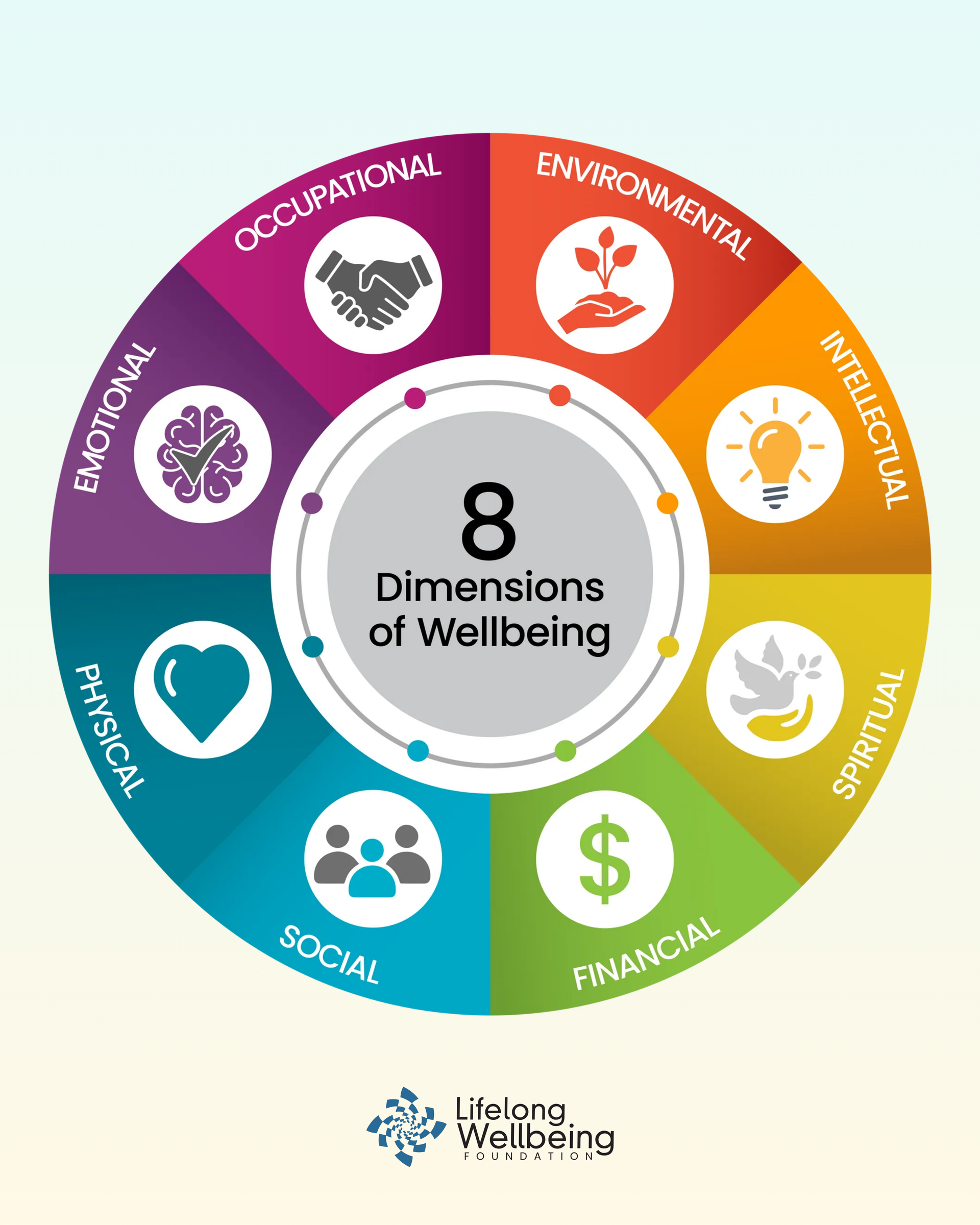The 8 Dimensions of Wellbeing

When we talk about student health on campus, two words often come up:
wellness and wellbeing. While they sound similar, they aren’t the same.
Wellness focuses on the daily choices students make (think: sleep, nutrition, and exercise) that help maintain health. It’s personal and proactive, often the focus of campus programs like fitness classes or stress management tips.
Wellbeing, on the other hand, is broader. It’s not just what students do, but how they feel, how they function, and how supported they are overall. It includes purpose, connection, and the social and environmental factors that shape a student’s experience across all 8 dimensions of wellbeing. Understanding the difference helps students, parents, faculty, and administrators create healthier, more supportive campus environments.

What Are the 8 Dimensions of Wellbeing?
When you think about wellbeing, you might picture eating kale salads or trying to keep your vibes right. But wellbeing is way more holistic than that! It’s a full-picture view of how you’re doing across different areas of life. The 8 dimensions of wellbeing include:
Emotional, Physical, Social, Intellectual, Spiritual, Environmental, Occupational, and Financial.
Each dimension is connected to the others. When one area is struggling, it can impact everything else. And when one is strong, it can boost your overall sense of balance and health.
In this series, we’ll break down each dimension one at a time. What does it actually mean? What does it look like in real life? And what should you be paying attention to as a college student?
Check out the posts:
Emotional
Physical
Social
Intellectual
Spiritual
Environmental
Occupational
Financial
Our hope is that this series helps you recognize which areas of your life might need a little more care right now. Once you’ve done this, it’s a lot easier to figure out where to start and where to go next.










